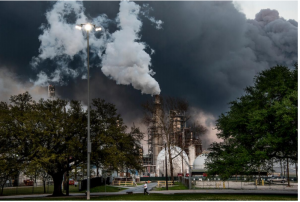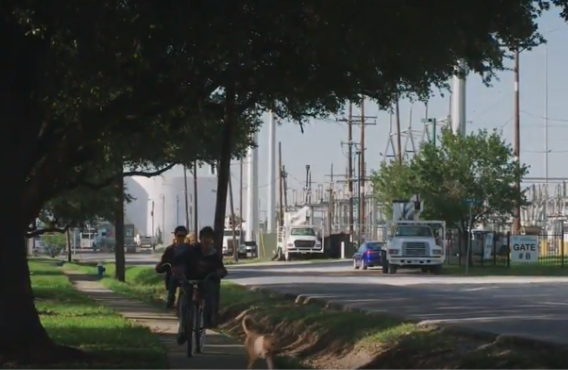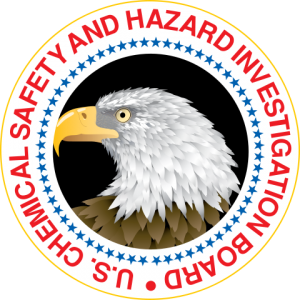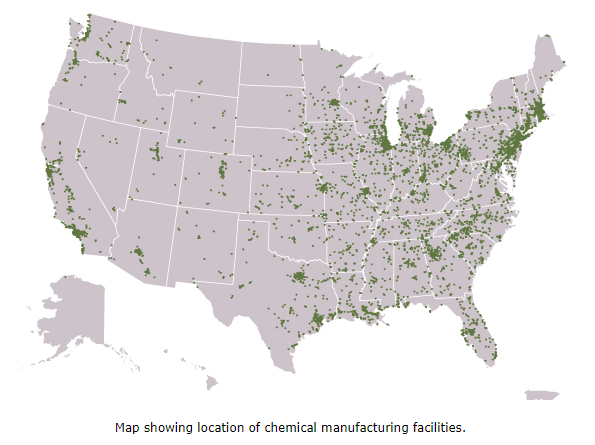 This weekend marks one year since Hurricane Harvey made landfall and wreaked a huge amount of havoc in Texas and other Gulf Coast states. While there are many lessons we can learn from the storm, and much finger pointing that can be done, one fact is clear: Trump’s EPA failed to properly protect children and families in Houston from chemical leaks triggered by the storm.
This weekend marks one year since Hurricane Harvey made landfall and wreaked a huge amount of havoc in Texas and other Gulf Coast states. While there are many lessons we can learn from the storm, and much finger pointing that can be done, one fact is clear: Trump’s EPA failed to properly protect children and families in Houston from chemical leaks triggered by the storm.
We now know that Houston’s vast petrochemical industry released at least 8.3 million pounds of air pollution in the wake of the storm, and that many of the area’s toxic Superfund sites were improperly secured and subsequently flooded.
But perhaps worse than these impacts is the fact that one year later, the more than 134 million Americans who live near chemical plants and storage facilities, a disproportionate number of whom are people of color and lower-income, are still at great risk.
The Trump EPA’s dangerous failures
During and after Hurricane Harvey, as well as Hurricanes Irma and Maria that followed, EPA failed to take important steps to protect families and neighborhoods from health threats:
- Arkema chemical plant explosion: Neither EPA nor the Texas Commission on Environmental Quality (TCEQ) moved fast enough to monitor air quality issues at the Arkema plant when chemical drums caught fire and lids exploded. But a lack of data didn’t stop them from reassuring residents about local air quality. To date, neither TCEQ nor EPA has taken any enforcement action against Arkema, despite the violations (although the company and its CEO and plant manager have been indicted for reckless emissions of dangerous pollutants).
- Valero refinery leak: Hundreds of families in Houston’s Manchester neighborhood may have breathed in concentrations of benzene that could have damaged their health. But neither EPA nor TCEQ tested the air there until news outlets had published independent air quality monitoring results showing high benzene readings that EDF and Air Alliance Houston paid to do (as did the city of Houston).

Residents of the Houston community of Manchester with refineries nearby
Instead, EPA relied on statements by Valero Energy—which EPA later acknowledged “significantly underestimated” the amount of benzene and other volatile organic compounds released at the refinery. To date, neither TCEQ nor EPA has taken any enforcement action against Valero, despite the violations.
- Superfund sites: The Houston metro area has more than a dozen Superfund sites, designated by EPA as being among America’s most intensely contaminated places. Many of them flooded during and after Harvey, raising risks that waters would loosen contaminated sediment. Even as reporters inspected most of these sites up close, EPA only surveyed them from the air, claiming they were inaccessible. Superfund sites in the Southeast and PuertoRico were also hit by rain and winds from Hurricanes Irma and Maria, creating concerns about toxic drinking water.
In the wrong direction: The Trump administration now weakening chemical safety rules
In the wake of this health crisis, former EPA Administrator Scott Pruitt moved to eliminate EPA rules issued after a chemical explosion killed 15 people at a Texas fertilizer plant (including a dozen first responders) in 2013.
Undoing these safeguards would exempt plant owners from releasing information on chemical hazards to local communities and how to respond in event of a disaster, end requirements that chemical plant owners keep up to date safety information, get rid of training and more.
The good news is that last week a federal judge ruled that the EPA’s bizarre and dangerous effort to delay the Obama-era disaster safety rules was illegal and ordered the Trump administration to put them in place for the time being. The judge even said the Trump Administration “makes a mockery” of federal laws governing federal chemical plant safety.
However the Trump Administration is moving forward with their much weakened rule, which they may finalize in the coming months.
Attacks on chemical safety go beyond regulatory rollbacks
Trump’s EPA is not content to stop there in its efforts to weaken chemical protections. They are also putting over 134 million Americans at risk with their staffing choices, and by trying to cut budgets and eliminate expert oversight:
- Staffing: The head of the Trump EPA Air Office, William Wehrum, is a former polluting industry attorney who has attacked protections against chemical disasters. He has provided legal services to several members of a coalition fighting the rules.
 Crippling oversight:The EPA has worked to eliminate the Chemical Safety and Hazard Investigation Board, an independent agency that investigates chemical accidents at industrial facilities, how they occurred, and how to prevent them.
Crippling oversight:The EPA has worked to eliminate the Chemical Safety and Hazard Investigation Board, an independent agency that investigates chemical accidents at industrial facilities, how they occurred, and how to prevent them.- Cutting budgets: President Trump and his EPA have urged cuts of more than $5 million to programs that help prevent, prepare and respond to disasters stemming from chemicals and other dangerous materials. They have also proposed to cut more than $6 million from programs that require companies to let the public know what chemicals they are using so that communities and localities can make informed decisions about the threats they face.
Acting EPA Administrator Wheeler, who has previously worked as a chemical industry lobbyist, faces many test in the coming weeks and months as he considers whether the agency should move forward with these weaker rules and oversight efforts.










